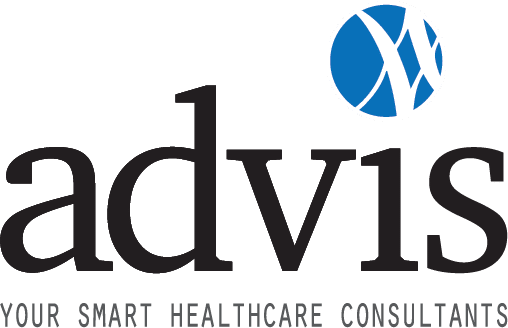
Bryan Niehaus, J.D.
Vice President
Maximize FQHC Relationships
Around for decades, FQHCs have continued to evolve with the times. The patient-centered focus of FQHCs, opportunities for specialty-care referrals, and management of low-income high-cost patients make these networks a unique partner for hospitals. Establishing, fostering, and growing connections between hospitals and FQHCs can reap benefits by ensuring patient care management is being optimized across the care continuum. Hospitals are uniquely placed to assist FQHCs in driving down unnecessary ER visits, benefiting patients and providers alike. By ensuring patients access care in the right setting at the right time, hospitals and FQHCs can drive cost savings and increase revenue. Evaluating the FQHC/Hospital opportunities requires navigation of distinct regulatory requirements and an understanding of how both parties benefit.

Preston Sisler, J.D.
Senior Consultant
Telehealth is a Revenue Generator
Out of necessity and due to relaxed regulatory restrictions during COVID-19, providers significantly expanded telehealth offerings in 2020. As the pandemic continues, telehealth will remain a revenue generator while addressing needed capacity for various services. Although the future regulatory climate is uncertain, providers would be well-served to begin developing a post-pandemic, comprehensive telehealth strategy, which figures to be a key revenue component.

Dan Avants, J.D.
Vice President
Establish Greater Control of Pharmacy and PBM Networks
Hospitals continue to struggle to negotiate and compete with payers and PBMs relative to their pharmaceutical networks. This leads to lost revenue opportunities, limitations for patients, lack of drug access, and more. Over the past several years, hospitals and health systems that have established integrated retail pharmacy models with their own health plans and local employers, have seen success in competing at more favorable rates for patients while maintain a robust and effective
service line. As pharmaceutical prices continue to rise and payer/PBM access continues to limit providers, a robust retail program presents a significant opportunity for expansion and growth.

Jake W. Beechy, JD
Senior Consultant
Specialty Pharmacy and Infusion Clinic Coordination.
Combining the two service lines of specialty pharmacy and infusion services are complementary. Specialty drugs currently account for nearly 40% of pharmacy benefit spend, and the number of patients who need specialties drugs are on the rise. Though there may be accreditation and infrastructure considerations, such as designing comfortable space for patients near the specialty pharmacy, efficiencies will be reflected in staffing and workflows. Furthermore, hospitals with 340B
pricing can also experience additional savings. The hospital-based infusion services will also ensure patients continue to experience a seamless continuum of care and allow for the hospitals to utilize its existing nursing, pharmacy, dietitian, and physician services to increase revenue and increase patient satisfaction.

Susan Maupin, J.D.
Vice President
Time to Plan!
With much emphasis rightfully placed on the COVID public health emergency in 2020, it is likely that business development activities and/or operational assessments have not been a top priority for many hospitals and health systems. As we are hopeful to soon see an end to the pandemic, now is the time to re-evaluate the services currently available under your system’s continuum, what may be needed moving forward, and what services can be grown.
This is also a good time to conduct assessments on the current status of operations, specifically reviewing financial performance. As a system, evaluate whether you are we being reimbursed appropriately in all areas of care. Also evaluate whether you can improve operations to ensure compliance, best practices and maximum financial benefit to remain a thriving health care delivery system.

Ryan Yokley, J.D., MHA
Vice President
Hospital-FQHC Collaboration
As hospitals explore alternative delivery models to provide healthcare in a more fiscally responsible manner, many are realizing that strategically developed affiliations with FQHCs can result in revenue generating opportunities. Such collaborations may be as simple as the FQHC contracting with the hospital to provide various ancillary services to FQHC patients such as lab and radiology, to more integrated delivery models where the FQHC provides necessary outpatient
services, and the hospital provides all acute care and specialty services for a defined population or service via a formal referral arrangement. Additionally, these partnerships often promote increased coordination of care, resulting in improved health outcomes.

Michael French, J.D.
Senior Consultant
Establish Medication Management Clinic to Expand 340B Benefit
At this stage, most qualifying hospitals have fully established 340B Programs and are looking for innovative strategies to increase 340B revenue. One of the most effective non-traditional methods for realizing significantly greater 340B savings is through a 340B Medication Management Clinic (MMC). Many entities who operate MMCs significantly improve patient health outcomes while simultaneously realizing hundreds of thousands to millions of additional annual 340B revenue, capturing 340B prescription revenue from patients that wouldn’t otherwise qualify for the Program. MMCs work best for hospitals that have closely affiliated freestanding physician offices that are willing to refer patients to the MMC for a 340B-qualifying visit.

Amanda Bogle, J.D.
Senior Consultant
Invest in Artificial Intelligence and Machine Learning
As AI and machine learning capabilities become more and more advanced, healthcare executives must make investments in these advances sooner rather than later in order to keep up with improvements in patient outcomes and decreases in administrative costs by competitors who have opted for earlier investment timelines. Clinical AI is poised to make vast improvements in many areas of healthcare including value-based care, personalized medicine, treatment protocols, and social determinants of health. In addition, as patients gain more control over their own healthcare choices, use of AI and machine learning will increasingly become a key factor in patient decision-making. Upfront costs may cause some sticker shock, but the long-term revenue boosts will prove a guaranteed worthy investment.

Ryan Bailey, J.D.
Vice President
Continue to Carefully Plan COVID Funding: Rapidly Review, React and Respond
Of course we all expect that providers will continue to have a heavy focus on the COVID-19 pandemic and related recovery in 2021, especially in the first 3 to 6 months. Therefore, continuing to carefully plan COVID funding will remain a high priority. How broadly should you define expenses for the CARES Act reporting? Can you justify retention of all grant funds? Should you pursue voluntary funding sources like the FCC or Treasury funds? When should you file for FEMA? These are questions that providers will continue to face to protect and maximize grant revenue in 2021. Furthermore, if and when the Public Health Emergency is declared over by HHS, there will be downstream ramifications to those who have benefited from increased flexibilities under the related waivers. Now is the time to start planning how to ensure continued operations and revenue protection for when this ultimately occurs. For example, if your hospital temporarily increased beds, or established new sites of care, and you project continued utilization of these post-pandemic, it is prudent to be identifying the actions necessary to make these changes permanent at state and federal law now. On top of all of this, the most recent stimulus bill (the Consolidated Appropriations Act) includes many provisions intended to benefit hospitals, such as the creation of the new Rural Emergency Hospital care venue and expansion of GME caps. With the change in executive administration and control of Congress, providers can reasonably anticipate further beneficial legislation and
sub-regulatory guidance in 2021. Having a structure in place to rapidly review, react, and respond to these changes will best position providers to be prepared for future revenue enhancement possibilities.

Monica Hon, J.D.
Vice President
Optimizing the Patient Experience and Maintaining Your Ability to Pivot
The silver lining of this past tumultuous year is the expansion and acceptance of telehealth throughout various healthcare venues and the flexibility that healthcare operators championed. That being said, as vaccinations continue and the pandemic gets under control, patients will still have lingering anxiety about seeking healthcare services and they will also have choices in their healthcare providers. With virtual services available now, accessibility beyond their immediate
communities is a reality. They will look for the optimum patient experience. The focus of 2021, should be on optimizing the patient experience to set your organization apart from the rest. They need to feel they are safe when entering your facility. The virtual experience should be user-friendly and when onsite, promote contactless processes where ever possible. Now is the time for your facilities to review the patient journey and make necessary improvements while maintaining the ability to pivot when necessary. Take a look at improving this journey through state-of-the-art automation, improving flexible workflows, implement online or mobile scheduling, registration and check-in. And most importantly, optimize the experience by making the cost competitive in the market.
Vendors, Emergency and Ambulatory Service Providers Should Consider Entering the Rural Market with the implementation of Rural Emergency Hospital Classification
The new Rural Emergency Hospital classification recently announced by CMS opens the door for emergency physician organizations, staffing agencies, and ambulatory service providers to enter rural markets by partnering or contracting with existing rural hospitals who may need expertise or additional specialized staff to meet the requirements of the classification. The financial incentives for this new classification is projected to assist struggling rural hospitals to promote much needed services in these communities and shift the focus to emergency and outpatient services from inpatient care.
For more information please contact us or call (708) 478-7030
Pubished:
